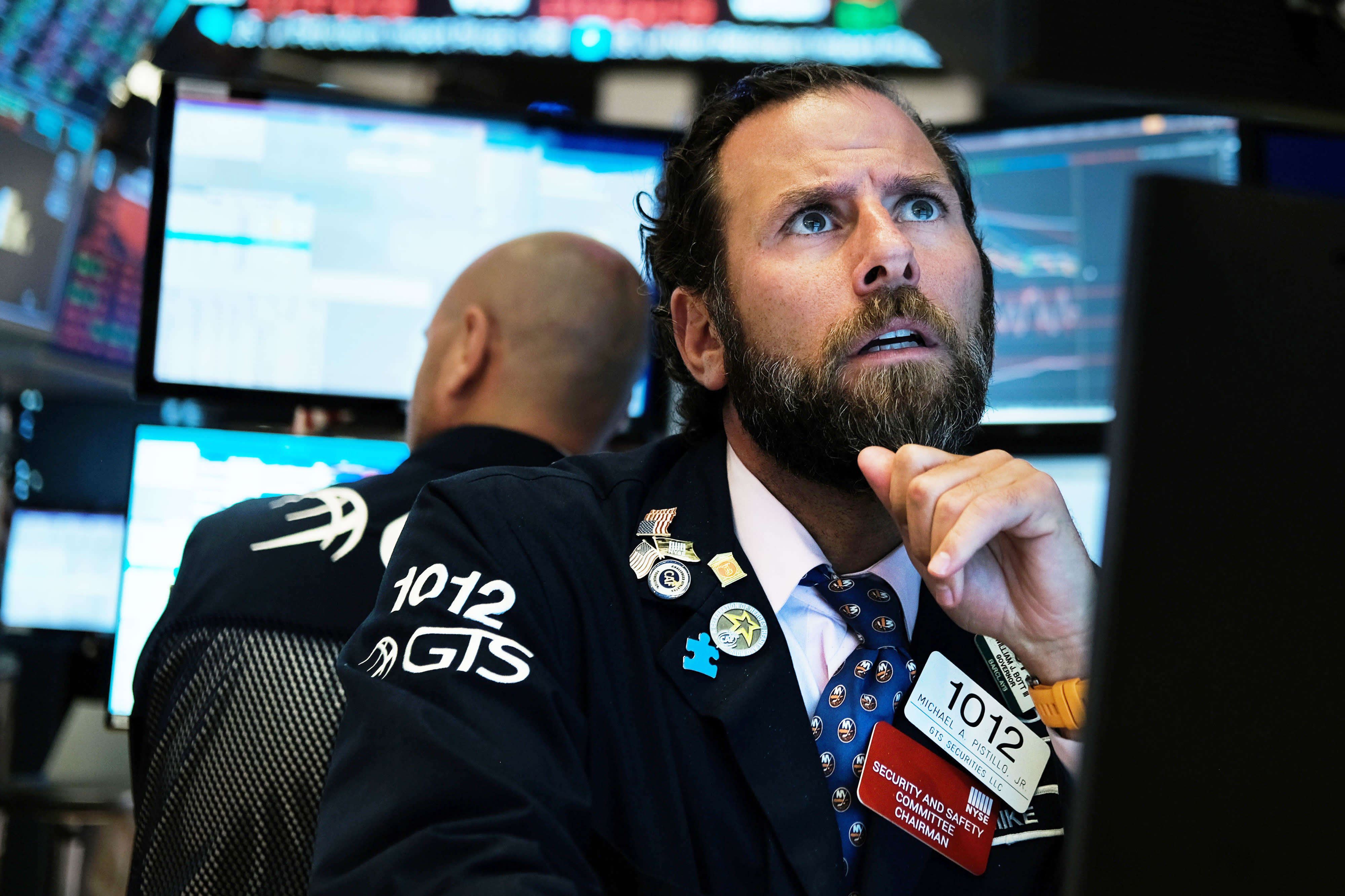Traders work on the floor of the New York Stock Exchange.
Spencer Platt | Getty Images
Wall Street is suffering a risk-off relapse, producing a milder but familiar set of the symptoms felt during last year’s overdone summertime recession scare.
Bond yields have rushed toward their old lows, flattening the gap between very short-term and 10-year Treasuries. World growth expectations are rolling over, as China’s work and travel restrictions to contain the Wuhan coronavirus defer the payout of the trade-peace dividend that investors expected after the U.S.-China trade deal.
And a stock market has gotten a pretty good rinse — though not yet a true washout. The S&P 500 has dropped 3% from its record high. Economically cyclical groups have been purged. Bonds are leading stock returns one month into the year. And the top-performing sector for the year so far is utilities, followed by the marquee tech giants believed to be impervious to economic ebbs and flows.
All this is happening in a market that had become quite stretched in terms of valuation, investor sentiment and positioning, as noted here three weeks ago. Something was bound to come along and prompt a pullback. As it happened, the viral outbreak arrived to do the job, in the process fogging the growth outlook and draining risk appetites.
What to watch for next
The action and Wall Street narrative recall the backdrop to the August-September market retrenchment. So, what does that period imply about the correct playbook now?
On a tactical basis, it means watching for signs of climactic selling, rising fear levels and oversold conditions that often accompany the end stage of a pullback. Given that a perfectly routine decline following a strong multi-month rally could amount to 2% to 5%, a further drop of 2% to 3% would not compromise the broader uptrend.
Such a spillback from here would take the index back to where it broke out to a string of record highs in mid-December. In both August and May of last year, sell-offs that caused investor anxiety to spike and hedging activity to grow fevered. By the end of last week, these responses were starting to show up but not in a decisive way.
Tim Hayes, chief global investment strategist at Ned Davis Research, noted the worldwide recoil from risk and said, “To an increasing extent, breadth indicators reflect downside momentum, yet sentiment indicators are far from indicating that the excessive optimism has given way to extreme pessimism. And it has yet to become evident that the market has adjusted to the probability that the outlook for economic growth and earnings is less favorable than suggested by the stretched valuations.”
And the build-up of investor anxiety over the U.S. election and rise of Bernie Sanders in the polls for the Democratic nomination suggests that primary results will be a part of any crescendo in Wall Street worry that would be a part of this sentiment reset.
Bond market signaling Fed could act
Meantime, attention has already turned to what this all means for already-easy monetary and fiscal policies around the world.
Federal Reserve chair Jerome Powell last week sounded a dovish note in his press conference emphasizing the Fed’s commitment to lift inflation to and beyond its 2% target. This along with the downscaling of Chinese activity, collapse in commodity prices and interruption of world trade flows was enough to get bond markets pricing in a high likelihood of another Fed rate cut around mid-year. With the 10-year yield now beneath the three-month Treasury bill yield, the market is effectively hinting the Fed needs to clip overnight rates before too long.
Last year, of course, the Fed delivered three rate cuts, and after it went on hold and U.S. GDP remained roughly at 2%, the markets effectively concluded that it could enjoy the gain of easier money without the pain of a punishing downturn.
Could something similar be ahead this year? Canaccord Genuity strategist Tony Dwyer, who turned neutral on stocks from a bullish stance Jan. 20, is now waiting for technical indicators to reach extreme oversold readings before dialing up equity exposure again.
Yet he points out that in coming months, “The global monetary and China fiscal stimulus coming out of this is going to be extraordinary.”
Investors did not come into this year expecting it to be another year of soft economic footing, sliding bond yields and market anticipation of ever-more stimulus. It was meant to be about cyclical reacceleration, upward drift in yields and central banks standing pat.
Yet here we are. Investors can take some comfort in a few things. The S&P 500 dividend yield again exceeds the 10-year Treasury yield. Exxon Mobil‘s dividend yield above 5.5%, jarringly, is above the yield on the junk-bond index. Consensus earnings forecasts are nudging higher. And credit markets, while registering some nervousness with wider risk spreads in recent weeks, are not under severe stress or growing too stingy just yet.
None of this amounts to an all-clear signal for a re-risking of portfolios. But it suggests the process of curtailing excesses, trimming valuations and resetting expectations is well underway.
